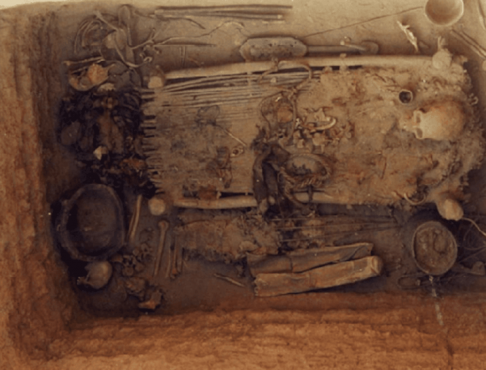2700-year-old weed found in an Asian grave is still totally smokeable

An archaeological discovery in northern Asia has provided insight into the smoking habits of ancient civilizations.
Â
- Ontario lottery winners must now ramp up
- In Michigan, employers can now fire or refuse to hire medical cannabis users
- New Quebec bill will ban smoking in public places. Montreal says that's impossible to enforce
Â
Scientists were studying northern China’s Yanghai tombs and stumbled upon an ancient cannabis stash in the grave of a blond, middle-aged Caucasian man. It is believed that the deceased was an ancient Jushi Kingdom Shaman from the Turpan basin region.
The grave contained 789 grams of flower, along with religious artifacts and personal belongings that the Jushi believed would accompany their dead to the afterlife.
Thanks to ideal conditions in the grave–alkaline soil pH and a very dry climate among them–the cannabis had maintained its green colour, although scientists noted it lacked its distinctive odour and taste. They did not specify how they determined the taste of the 2700-year-old herb.
Although they initially believed it to be coriander, further investigation by an expert team from the Chinese Academy of Sciences Institute of Botany deduced that the substance was cannabis. The stash was subsequently found to contain a significant amount of THC, the primary psychoactive compound in cannabis that produces a “high.†The flower found in the grave was exclusively female.
Based on the finding, researchers deduced that this cannabis was for recreational and spiritual use and may have played a significant role in the Shaman’s cultural practices.
The stash is currently residing at China’s Turpan Museum, but they’re totally just holding it for a friend.
Â
Want to keep up to date on what’s happening in the world of cannabis?  Subscribe to the Cannabis Post newsletter for weekly insights into the industry, what insiders will be talking about and content from across the Postmedia Network.